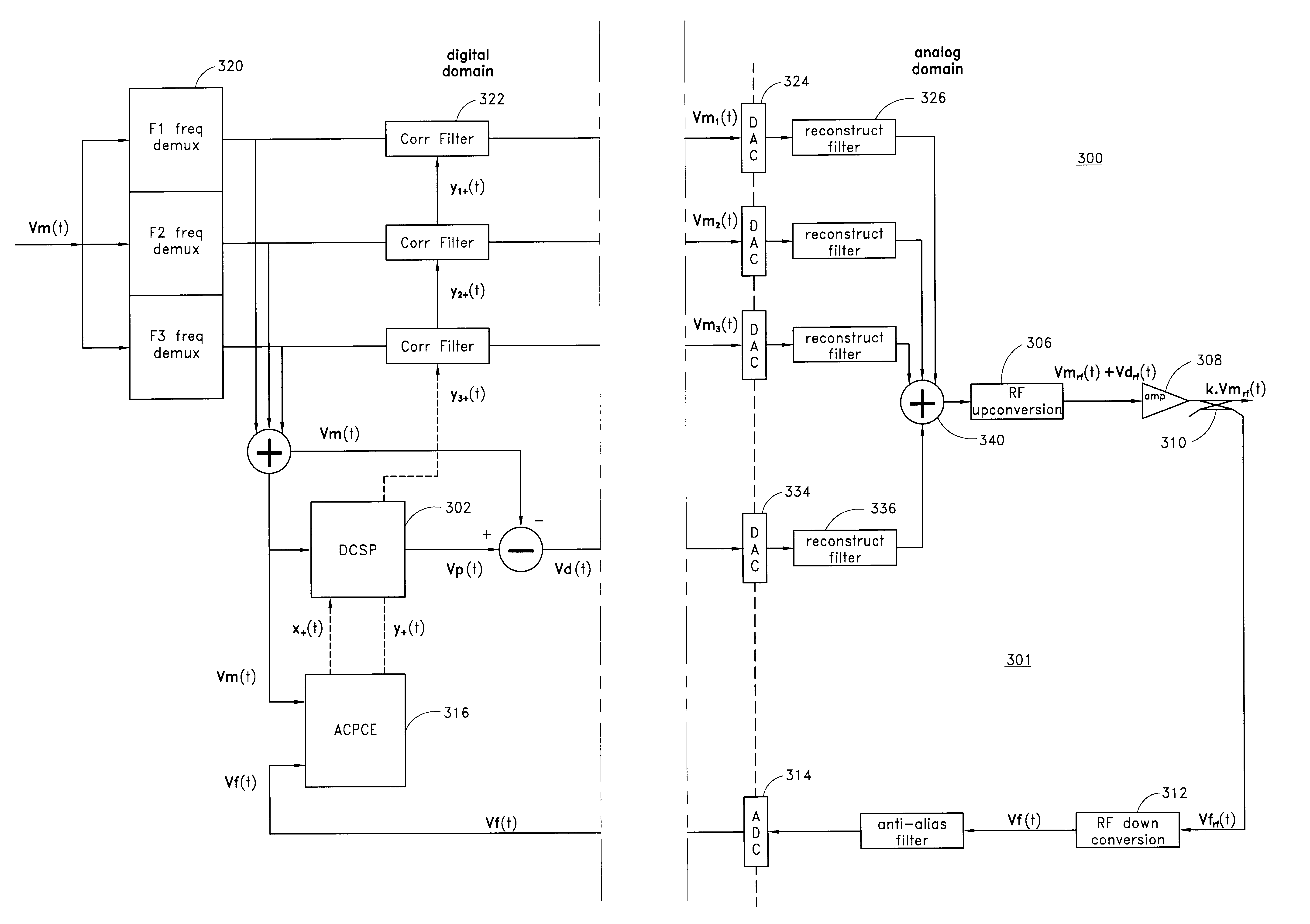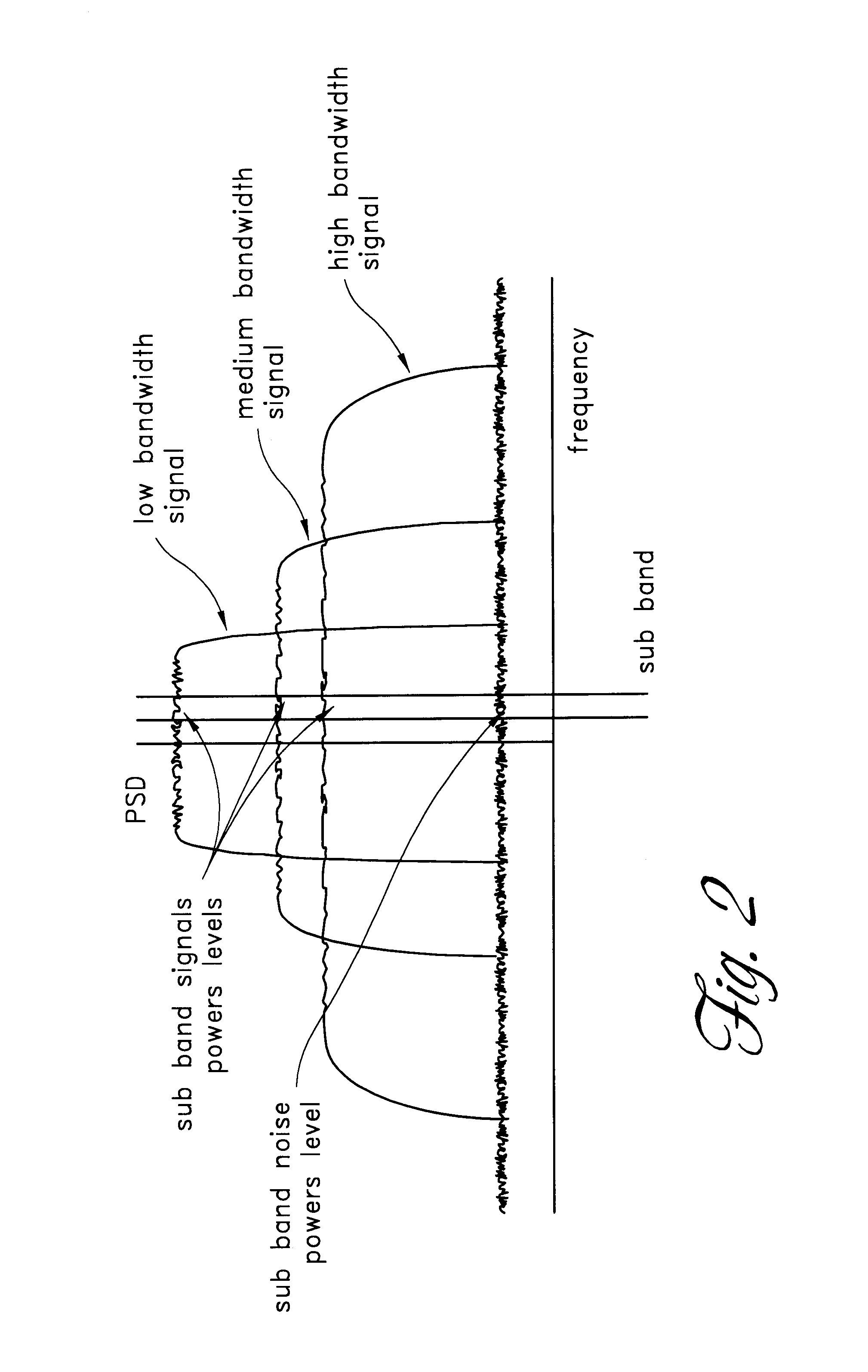Low noise wideband digital predistortion amplifier
a wideband, low-noise technology, applied in amplifiers, transmitter/receiver shaping networks, transmission systems, etc., can solve problems such as undesirable interference, signal distortion, and distortion
- Summary
- Abstract
- Description
- Claims
- Application Information
AI Technical Summary
Benefits of technology
Problems solved by technology
Method used
Image
Examples
Embodiment Construction
In the following description, reference is made to the accompanying drawings, which form a part hereof, and which show, by way of illustration, specific embodiments or processes in which the invention may be practiced. Where possible, the same reference numbers are used throughout the drawings to refer to the same or functionally similar components. In some instances, numerous specific details are set forth in order to provide a thorough understanding of the present invention. The present invention, however, may be practiced without the specific details or with certain alternative equivalent devices, components, and methods to those described herein. In other instances, well-known devices, components, and methods have not been described in detail so as not to unnecessarily obscure aspects of the present invention.
The North American digital cellular telephony services employ linear modulation schemes to encode baseband information in both the amplitude and phase o...
PUM
 Login to View More
Login to View More Abstract
Description
Claims
Application Information
 Login to View More
Login to View More - R&D
- Intellectual Property
- Life Sciences
- Materials
- Tech Scout
- Unparalleled Data Quality
- Higher Quality Content
- 60% Fewer Hallucinations
Browse by: Latest US Patents, China's latest patents, Technical Efficacy Thesaurus, Application Domain, Technology Topic, Popular Technical Reports.
© 2025 PatSnap. All rights reserved.Legal|Privacy policy|Modern Slavery Act Transparency Statement|Sitemap|About US| Contact US: help@patsnap.com



